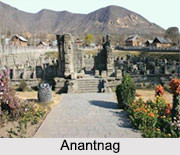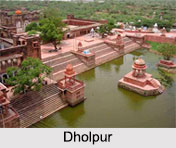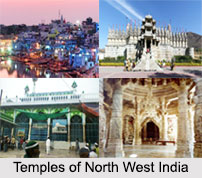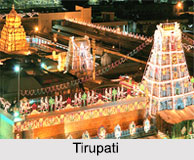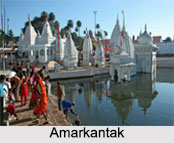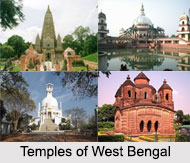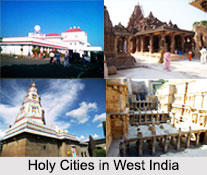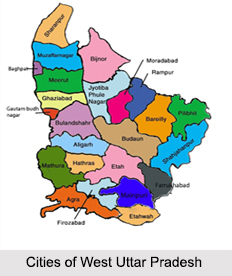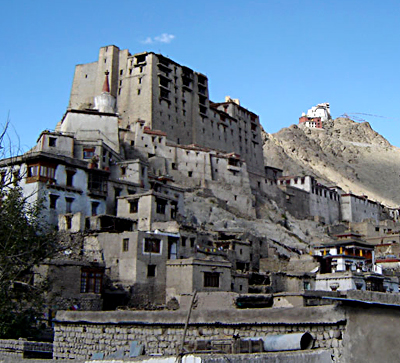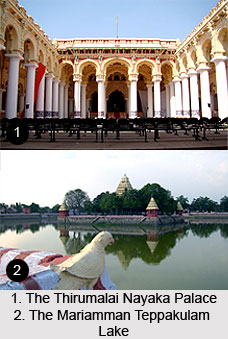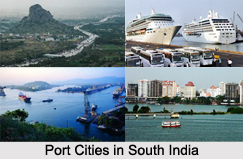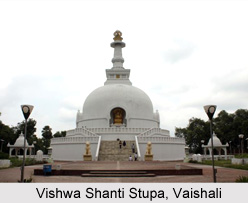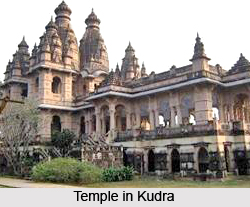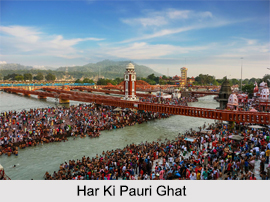Introduction
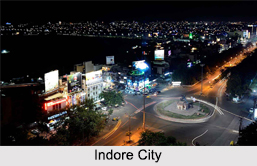 Indore is a major commercial city of central Indian state of Madhya Pradesh. Indore played a most important role in history of India. Indore has the secondary and tertiary industries and has a good connectivity with all the Indian states and the cities of India.
Indore is a major commercial city of central Indian state of Madhya Pradesh. Indore played a most important role in history of India. Indore has the secondary and tertiary industries and has a good connectivity with all the Indian states and the cities of India.
Location of Indore
Indore is located in Indore District of Madhya Pradesh. Indore touches the southern edge of Malwa plateau and it is surrounded with Saravati river and Khan river. These are the tributaries of Shipra river. Indore is located on the elevated plain of Yadri range in the south of India.
History of Indore
History of Indore dates back to almost 18th century and reflects the prejudices of Holkar dynasty. Indore is presently the largest city and the commercial capital of the central Indian state of Madhya Pradesh; its present location is on the Malwa Plateau, just north of the Vindhya Range.
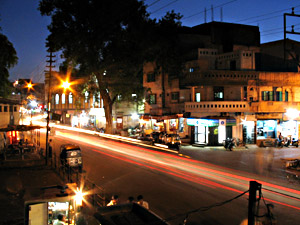 The ancient history of Indore narrates the ancestors or the founders of Indore to be the hereditary Zamindars and indigenous landholders (Jehangirdars) of Malwa. In Mughal times, the founders of these families were honoured with the titles such as Singh and Chaudhari, which established their control over the land. In the 18th century, control of Malwa passed to the Peshwa clan, and the Chaudharis came to be known as "Mandloi"s that was derived from Mandals, owing to the language they used and eventually the Holkars bestowed the family with the title of singh Raja. The family retained its belongings of royalty, which included having an elephant, Nishan, Danka and Gadi even after the arrival of Holkars and also retained the power of performing the first puja of Dushera (Shami Pujan) before the Holkar rulers.
The ancient history of Indore narrates the ancestors or the founders of Indore to be the hereditary Zamindars and indigenous landholders (Jehangirdars) of Malwa. In Mughal times, the founders of these families were honoured with the titles such as Singh and Chaudhari, which established their control over the land. In the 18th century, control of Malwa passed to the Peshwa clan, and the Chaudharis came to be known as "Mandloi"s that was derived from Mandals, owing to the language they used and eventually the Holkars bestowed the family with the title of singh Raja. The family retained its belongings of royalty, which included having an elephant, Nishan, Danka and Gadi even after the arrival of Holkars and also retained the power of performing the first puja of Dushera (Shami Pujan) before the Holkar rulers.
Under Mughal rule, these families enjoyed great influence and were accorded confirmatory sanads by the Emperors Aurangzeb Alamgir and Farukhshayar, confirming their `Jagir` powers. Rao Nandlal Chaudhary Zamindar, upon visiting the court of Delhi, received a special seat in the emperor`s court along with two jewel-studded swords, which are now at display in the Royal British Museum under the family`s name. Raja Savai Jai singh of Jaipur gifted him with a special "Gold Langar" which ascertained a special place to him in all the Durbars of India. The family`s decency and influence over Malwa was influential in the rise of the Peshwas and Holkars to leadership of this region.
Rao Nandlal Chaudhary is the prime name in the history of Indore. He was the founder of Indore, the Chief Zamindar and had an army of 2000 soldiers. In 1713, Nizam was appointed as the controller of the Deccan plateau area, which started the struggle between the Marathas and the Mughals. From time to time the Maratha invaders kept distressing the people of Malwa and thus Nandlal singh arranged to pay 25000 rupees to them in return for undertaking the safety and security of his people, upon which the invaders returned back to the Deccan.
Nandlalsingh found the location of Indore to be safe and strategic, while visiting the temple of Indreshwar near the banks of river Saraswati. He started moving his people in, constructed the fort of Shree Sansthan Bada Rawala and protected them from harassment by Marathas and Mughals. The city was named Indrapur (after Lord Indreshwar), and eventually came to be known as Indore. Baji Rao Peshwa finally received the Viceroyalty of Malwa in 1743 A.D. and was acknowledged by a treaty forbidding him from ever infringing upon the rights of Zamindars. Malhar Rao Holkar was one of the four eminent personalities who guaranteed the proper fulfillment of the conditions. Upon victory the Peshwas appointed Malhar Rao Holkar as a "Subhedar", which marked the beginning of Holkars` reign in Malwa.
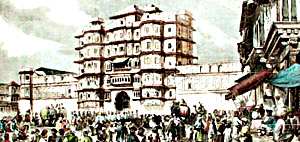
As a result of this defeat in the Battle of Mahidpur, the treaty of Mandsaur was signed and the Cantonment town of Mhow was ceded to the British. The treaty also stated that the capital of the Holkar state would shift from Maheshwar to Indore.
After India`s independence in 1947, the modern history of Indore began along with a number of neighboring princely states that became part of the Indian state of Madhya Bharat. Indore was declared as the summer capital of this newly created state. On November 1, 1956, Madhya Bharat was fused into Madhya Pradesh and Bhopal selected the capital. The city palace was made the seat of administration of the rulers of the Malwa region - The Holkars. The Rajbada was burnt during the 1984 riots, and thus converted into a garden till 2006 when the present Maharani of Indore, H.H Ushadevi Holkar, decided to re construct the wada to its past glory. H.H Ushadevi Holkar invited architects Himanshu Dudwadkar and Shreya Bhargava to design the upcoming project and in 2007 the Rajwada found its place back in the history of Indore. Indore became the only historic structure in India to have been rebuilt with exactly the same style and poise, materials and method of construction as those of 250 years ago.
Geography of Indore
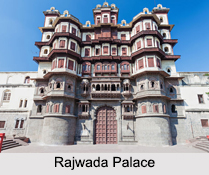 Indore is located on the western side of capital city of Madhya Pradesh-Bhopal. Indore covers an area of 3898 sq km. The latitudinal location of the city is between 22.42 degree north and 75.54 degree east with an altitude of 553metres from sea level.
Indore is located on the western side of capital city of Madhya Pradesh-Bhopal. Indore covers an area of 3898 sq km. The latitudinal location of the city is between 22.42 degree north and 75.54 degree east with an altitude of 553metres from sea level.
Climate of Indore
Indore enjoys a transitional weather which varies from tropical wet and dry climate to humid subtropical climate. The summer temperature rises from 44 degree Celsius to 48 degree Celsius and the cool temperature varies from 26 degree Celsius.
Demography of Indore
According to the Population Census in the year 2011, Indore has the total population of about 2,170,295. The average literacy rate is about 87.38 percent. Hindi Language is the official language of Indore.
Economy of Indore
Indore is economically flourished with manufacturing industries, logistic, gemstone and Information Technology industries.
Culture of Indore
Indore is culturally enriched with the mixed cultures of Maharashtra and Bundelkhand. Indore celebrates the festivals like Holi, Rangpanchmi, Baisakhi, Raksha Bandhan, Navratri, Dussehra, Ganesh Chaturthi, Deepavali, Ramzan, Gudi Padwa, Bhaubeej, Eid, Christmas Nagpanchmi and Ahilya Utsav. Indore is also known for its cuisines like Namkeens, Poha and Jalebi, Chaats (snacks), Kachoris and Samosas.
Tourism in Indore
Indore is dotted with many tourism destinations like Atal Bihari Vajpayee Regional Park, Kamla Nehru Prani Sangrahalay, Rajwada Palace and Yeshwant Club.
Gopal Mandir, Indore
 Gopal Mandir is a religious spot situated in Indore in Madhya Pradesh state of India. It is the city"s most important heritage structures. The temple is built by Krishna Bai Holkar in 1832. It is founded in the honour of Lord Krishna. It is situated on the right wing of the Rajwada. The highlight of this temple is its architecture.
Gopal Mandir is a religious spot situated in Indore in Madhya Pradesh state of India. It is the city"s most important heritage structures. The temple is built by Krishna Bai Holkar in 1832. It is founded in the honour of Lord Krishna. It is situated on the right wing of the Rajwada. The highlight of this temple is its architecture.
Attractions of Gopal Mandir
Gopal Mandir is a marble-spiral structure built in Maratha style of architecture. It has a big central hall with astounding pillars bearing an eponymous roof, which is elaborately beautified. There is also a spacious central hall designed with pillars. These beautiful pillars bear a massive roof which is elaborately decorated. Gopal Mandir temple`s system of lighting in the form of huge glass chandeliers is quite charming to the eye. The temple enshrines a two feet tall statue of Lord Krishna made of silver which is kept on a marble-inlaid altar with silver-plated doors.
Indore Zoo
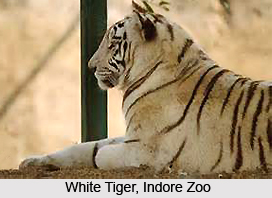 Indore Zoo is located in the region of Indore in the central Indian state of Madhya Pradesh and is also referred to as `Kamala Nehru Prani Sangrahlaya`. The zoo is categorised amongst the aggregate 180 recognized zoos in the entire country. The Municipal Corporation of Indore is supervised by Indore Zoo, particularly its preservation and maintenance. A large quantity of animals are present inside Indore Zoo, particularly white tigers.
Indore Zoo is located in the region of Indore in the central Indian state of Madhya Pradesh and is also referred to as `Kamala Nehru Prani Sangrahlaya`. The zoo is categorised amongst the aggregate 180 recognized zoos in the entire country. The Municipal Corporation of Indore is supervised by Indore Zoo, particularly its preservation and maintenance. A large quantity of animals are present inside Indore Zoo, particularly white tigers.
History of Indore Zoo
The Indore Zoo was founded in the year 1974 in the area of Nawlakha and it occupies an area measuring about 17 acres. However, much later during 1999, an adjoining 32 acres were added to the total area of the Indore Zoo. This portion of land had been obtained from Quadibag stretch of land. Presently, the area of this zoo is nearly 51 acres. Lush greenery fills the whole area of Indore Zoo, which includes a large number of floras. A wide variety of wild animals are also existent in Indore Zoo.
Fauna of Indore Zoo
At present, Indore Zoo contains animals like Leopard, Tigers, Ghariyal, Hippopotamus, Rhinoceros, Cheetah, Bengal Tiger and many others. This zoo is well equipped with all kinds of modern facilities which are essential for the conservation of wild creatures which has been accomplished as per the guidelines of the Central Zoo Authority of India. Therefore, Indore Zoo has been proclaimed as being amongst the most famous zoos based in numerous parts of the nation. The animals are all displayed in their natural habitats in this Indian zoo, which imparts a completely natural look and feel to the zoo atmosphere, where the animals are kept.
Tourist Facilities at Indore Zoo
Tourists visiting the Indore Zoo will be able to enjoy various animal rides like horse cart riding, Camel ride, Elephant ride and Pony ride. Several kinds of events are organised in Indore Zoo including fancy dress contests, photo exhibitions, dance competition, quiz shows, snake shows, drawing competitions, magic shows and much more. These public shows are arranged in order to attract the younger generation to the Indore Zoo and increase their general awareness about animals.
The Central Museum at Indore
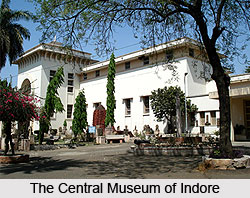 The Central Museum of Indore is located on Bombay-Agra Road. It was established in the year 1929.It has a wide variety of archaeological collection. Different types sculpture inscriptions; coins and rare archaeological items from Western Malwa are preserved in the museum. The museum is open on all days from 10 A.M. to 5 P.M leaving Mondays and public holidays.
The Central Museum of Indore is located on Bombay-Agra Road. It was established in the year 1929.It has a wide variety of archaeological collection. Different types sculpture inscriptions; coins and rare archaeological items from Western Malwa are preserved in the museum. The museum is open on all days from 10 A.M. to 5 P.M leaving Mondays and public holidays.
